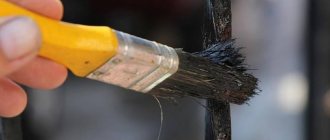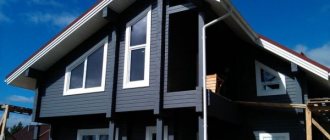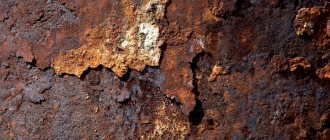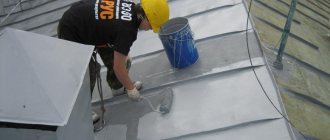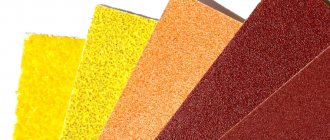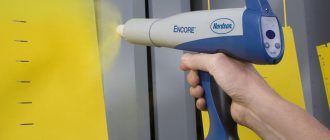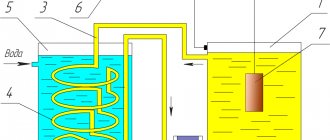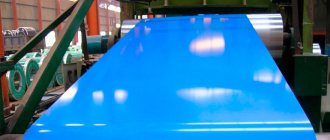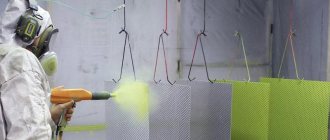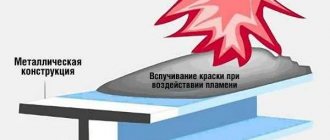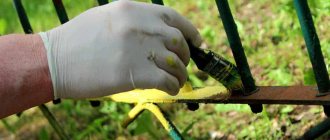Fiberglass wallpaper is a universal material for finishing walls and ceilings of any room. Previously, they were considered an office option, but the growing variety of textures, patterns and painting techniques have made it possible to use them in the design of living rooms.
The main advantage of the material is the ability to be repeatedly painted in different shades. To ensure that the properties of glass wallpaper are not lost, it is necessary to select high-quality paint and apply it according to technology.
Features of glass wallpaper
Fiberglass is a modern material with many advantages:
- Fiberglass wallpaper is made from a high-strength base. The material will be preserved even if it is attacked by domestic animals. This wallpaper is generally very resistant to mechanical damage.
- The material is highly resistant to fire.
- The surface of the glass wallpaper is resistant to the adhesion of dust and dirt, since the material contains an antistatic agent.
- Thanks to the antiseptic drug, the wallpaper is protected from the formation of fungus and mold.
- The composition of the final material includes specialized glass fabrics, which are characterized by resistance to wear. In addition, the fabrics are made from natural materials, which is good from the point of view of environmental friendliness and safety.
- Wallpaper of this type looks very respectable. There is a wide variety of textures, colors and patterns.
It is advisable to repaint glass wallpaper periodically, so it is recommended to purchase material with deep relief. In this case, the new paint will not overlap the old one. If there is a deep relief, the original texture will remain even after repeated staining.
Advantages and disadvantages
Like any material, fiberglass wallpaper has a number of advantages and disadvantages over other finishing materials. Taking into account all the nuances, you can easily decide on the relevance of this type of wallpaper for a particular room.
| pros | Minuses |
| High fire-fighting properties | High price |
| Consists of environmentally friendly materials and is therefore safe for health | Only latex or acrylic paint is suitable for painting. |
| High strength fiberglass coating, due to which the fabric has reinforcing properties | A special glue is required, the price of which is also higher than other adhesives. |
| Anti-vandal qualities | Fiberglass wallpaper is difficult to remove, since the impregnation is firmly bonded to the glue. |
| Long service life | It is mandatory to comply with safety rules when working, namely the presence of a respirator. |
| Glass wallpaper is resistant to changes in humidity and temperature, as well as sunlight. | |
| Sound insulation increases | |
| The walls are breathing |
The photo shows an infographic about the advantages of glass wallpaper
Paint selection
Paint for glass wallpaper should be water-dispersed - this is what most experts think. Water-dispersed compositions correspond to the following parameters:
- quick drying;
- no unpleasant odor;
- fast and deep impregnation of the material;
- non-toxic.
Since water-dispersed paint and varnish compositions contain a synthetic polymer substance, a film is formed on the surface as a result. This film acts as a buffer that protects the material from negative external influences.
Tips for caring and washing wallpaper
The glass wallpaper material itself is quite durable and can withstand various cleaning methods. The method must be selected depending on the paint covering the surface.
- Non-abrasive detergents can be used to remove stains from the glass cloth surface.
- depending on the moisture resistance of the paint, you can use soft suede or a brush,
- For preventive maintenance, it is enough to remove dust with a dry soft brush.
Types of water-dispersion paints
There are three groups of water-dispersed compositions:
- Butadiene-styrene dispersions. This type of paint is highly resistant to moisture. However, these paints and varnishes also have a significant drawback - instability to ultraviolet radiation. Over time, surfaces painted with styrene-butadiene dispersions fade greatly, so they try to use such paints in rooms with windows facing north.
- Polyvinyl acetate paint and varnish compositions. Paints of this type are distinguished by their low prices. Polyvinyl acetate is not characterized by high water resistance, so its scope of application is dry rooms.
- Acrylic compositions. This type of paint and varnish material is characterized by maximum water resistance. Acrylic also tolerates ultraviolet radiation well. Another advantage of acrylic is quick drying. Acrylic paints are considered the best choice for painting fiberglass wallpaper.
Note! If you need additional protection of the room from fire, you can purchase special fire-resistant acrylic paint.
Manufacturers
The decision about what paint to paint glass wallpaper is largely dictated by a positive attitude towards a particular manufacturer. For example, the famous Finnish one is considered a manufacturer of very high-quality paints that have proven themselves over many decades.
The products of the German company, which produces paint for fiberglass wallpaper “Mattlatex Dufa”, are not so well known to the general consumer, but are of no worse quality.
As an example, we can cite the following types of paints for fiberglass wallpaper:
- "Tikkurila Harmony". This paint and varnish material is of high quality, quick drying and moderate consumption. "Tikkurila Harmony" has no pungent odor, is offered in a wide range of colors and at very affordable prices. It also produces matte paint, which can be used to give the surface a velvety feel.
- "Tikkurila Euro 2". The paint is made from acrylate copolymer containing latex. A matte palette is also available. The company recommends using the paint only for painting dry rooms.
- Mattlatex Dufa. The paint and varnish composition from the German company is characterized by high resistance to external influences and economical consumption. Mattlatex Dufa contains latex and the surface is matte.
Fiberglass wallpaper in all its glory
Fiberglass wallpaper is a practical and original type of rolled wall covering. This coating is made from glass fibers, from which the fabrics are woven. The way in which the fabric was woven affects the formation of a particular pattern on the surface of the wallpaper. The starting components of fiberglass are quartz sand, clay, soda and limestone. All of these are natural and therefore environmentally friendly substances, which will please many caring parents.
Fiberglass wallpaper not only has an environmentally friendly composition, but also a number of advantages:
- The main advantage of glass wallpaper: they do not support combustion, do not emit toxic substances and are a deterrent to the spread of fire. This is possible thanks to their unique composition, which includes non-flammable components. This feature allows this material to be used even when finishing escape routes in case of fire.
- Fiberglass is a very durable material that can even be found in aircraft construction. This news will please pet owners. Claws and beaks cannot break through here, since the canvas can withstand tensile loads of up to three tons per 1 m2.
- Fiberglass wallpaper is very practical to use. Their service life is more than 30 years, and during this time they can be repainted up to 20 times, subjected to mechanical and chemical cleaning. They will also protect walls from the appearance of microcracks and other defects.
- Fiberglass does not accumulate static electricity, which means it does not attract or collect dust.
- The fabric structure of the wallpaper allows air and moisture to pass freely, thereby not creating conditions for the formation of mold and mildew.
- A wide range of textured designs is designed to satisfy the most capricious consumers.
This miracle material also has disadvantages. An undeniable disadvantage is the rather high cost, and since glass wallpaper must be painted, the amount of costs also increases by the price of paint materials.
Color selection
Once a manufacturer has been chosen, you can think about choosing the right paint shade. Most often, personal taste is decisive in this matter. However, when choosing, it is still recommended not to forget about some practical considerations:
- Bright, eye-catching colors may look attractive, but the mood will sooner or later change, and flashy shades can be very annoying. In addition, too bright colors usually get boring quickly.
- If you still want to make bright accents, it is recommended to use inserts with your favorite colors against a background of pastel colors.
- According to the rules of good taste, the color of the walls should be combined with the colors of furniture and other large interior items.
- Small patterns can change the geometric perception of a room, and large elements are suitable for rooms with a large area.
Advice! In small rooms, using several colors makes it possible to visually enlarge the room.
Is it necessary to paint glass wallpaper?
Typically fiberglass wallpaper is white and is usually painted.
You don’t have to paint it if you are happy with their appearance and they fit your interior in this form, but white wallpaper that needs to be painted may look unpresentable.
You should not paint glass wallpaper in bright colors, as this color will quickly get boring and you will have to repaint it.
They also produce colored glass wallpaper - they can also be painted, but this is not necessary.
Sticking
First of all, paintable fiberglass wallpaper needs to be glued to the wall. Below are step-by-step instructions that will help you avoid mistakes during the gluing process:
- The optimal room temperature when applying wallpaper to the wall is from 18 to 25 degrees Celsius. Relative air humidity should not exceed 70%. If these conditions are neglected, the glue will dry unevenly. In addition, drafts and direct sunlight should be avoided, otherwise the surface will bubble.
- To glue glass wallpaper for painting, you need not just any glue, but a special glue. PVA glue or any other compositions where PVA is one of the components are not suitable. The fact is that when using PVA glue with glass wallpaper, unsightly yellow spots and stains will inevitably remain on the coating.
- Glue can be purchased both ready-made and in powder form. Glue consumption per square meter is usually indicated on the packaging.
- Before gluing glass wallpaper for painting, we prepare the surface. We clean the wall from the old coating. The surface must be perfectly flat, so we putty it and clean it first with coarse-grained and then fine-grained sandpaper. Next, we treat the surface with acrylic primer for indoors. We start gluing the wallpaper only after the surface has completely dried.
- If we are talking about wallpaper with a simple pattern, first cut a piece of canvas of a suitable size. The dimensions must correspond to the height of the room plus a 10 cm allowance to fit the pattern. Apply glue to one and a half pieces of canvas in an even layer. We glue the first canvas and at the same time use a plumb line so that the canvas is strictly vertical. Smooth the canvas along the wall (from the center towards the edges) using a plastic spatula. We remove the glue protruding along the edges of the canvas with a knife or spatula. Glue the following panels butt to the ones already glued.
- If we are talking about gluing wallpaper with a complex pattern, then you need to act a little differently. First, we cut the canvases, taking into account the repeat (the distance between the repeating elements of the pattern). Do not forget to leave 10-12 centimeters for adjusting the canvas. We number the cut pieces (on the reverse side). Rapport is always indicated on the product label. The indicator must be taken into account when planning the number of glass wallpapers per room.
- With wallpaper with a complex pattern, you can do it differently: refuse to make blanks and immediately start gluing. In this case, the canvas is adjusted to the drawing as you go. Otherwise, gluing glass wallpaper with a complex pattern is no different from gluing simple wallpaper.
Before painting the glass wallpaper with a pre-selected paint, you must wait until the glue on the surface has completely dried.
Preparatory work
Before painting glass wallpaper for painting, it is necessary to perform simple preparatory work, then the work will be simple and even inexperienced craftsmen can do it.
After gluing and complete drying of the glass wallpaper, use a roller to cover the entire surface with a primer.
It significantly improves adhesion and the final result of painting, giving textured glass wallpaper brightness and good quality.
As a primer, you can use glue diluted with water or an ordinary wall primer.
Painting
Before applying paint, it is recommended to read the instructions on the packaging. The instructions indicate the consumption of paint and varnish material, drying time and other useful information.
It is recommended to prime the wallpaper with a roller. Without a primer, the surface will have insufficient adhesive qualities (adhesion of dissimilar materials), and the texture of the material will not be expressed as well as it could be.
We apply the paint and varnish material to the embossed glass wallpaper using a spray gun or roller. A brush will not provide the same even distribution of paint over the surface. Apply the dye in two layers. Apply the second layer 12 hours after the first.
You can paint glass wallpaper yourself in several ways:
- using borders;
- using stencils;
- squeegee method;
- using azure.
Curbs
When working with borders you should keep in mind:
- One textured pattern based on fiberglass is used both at the top and bottom of the border.
- The composition can use various texture solutions regarding the border.
When all the canvases are already on the wall, we glue the border. To ensure the work is done correctly, we mark the wall in advance. Apply the border only to a completely dry wall.
Stencils
Using a stencil does not just mean painting a surface, but creating geometric patterns. First, we carry out the main coloring of the canvas. After this, using masking tape, we apply the planned patterns to the surface of the glass wallpaper. At the same time, we apply the design very carefully, using a foam sponge. It is very important to avoid the paint material from flowing under the tape.
When the paint is completely dry, carefully remove the masking tape from the wall. The dried surface of the finished drawing can also be treated with paint - this time by hand.
Squeegee staining
This method is quite simple to implement. For the main color, deep and rich tones are suitable. After the first layer has dried, we apply a glaze coating that is similar in tone. For this purpose, decorative water-based varnish (translucent) or some other paint and varnish material with a metallic effect is suitable.
Without waiting for the coating to dry, remove excess paint using a moistened foam sponge. The goal is to leave paint only in the textured recesses of the relief coating.
Advice! Squeegee staining can also be done using a spatula (rubber or plastic).
Staining with azure
First, apply a layer of paint using a roller or spray gun. When the surface is dry, we begin to apply the glaze. We use a flat brush for this. The nature of the movements is transverse, in small strokes. After about 20 minutes, spread the mixture over the wallpaper with a rubber spatula. It is thanks to the spatula that you can achieve uniform distribution of the flakes over the surface.
If you need to get a more saturated color, we repeat the work done previously again or use a tone slightly different from the original one to give the surface visual depth.
